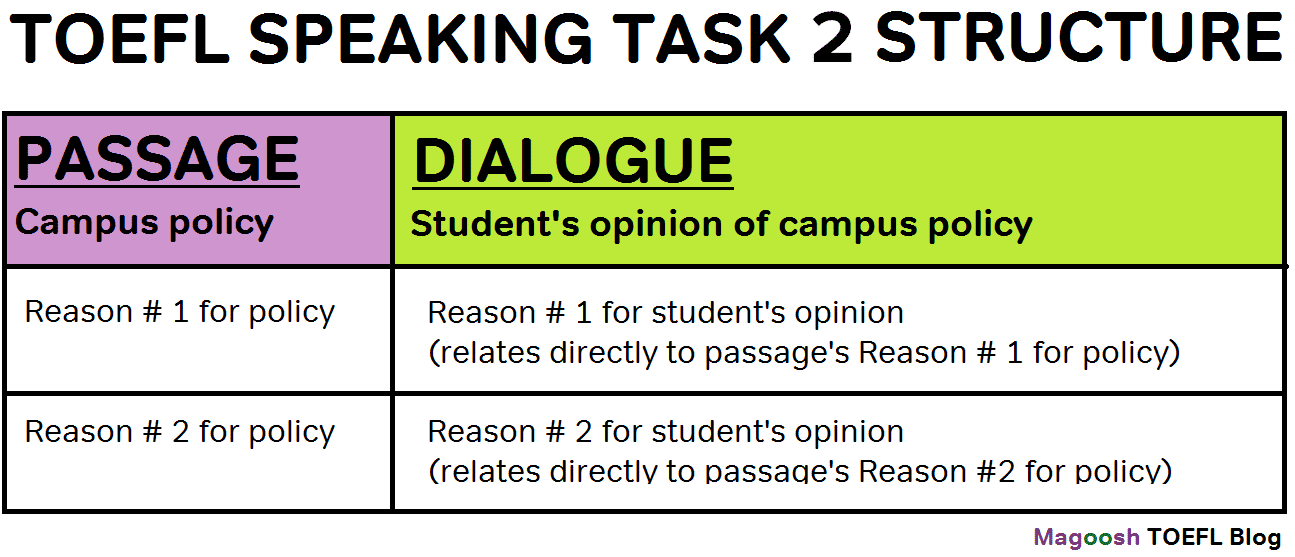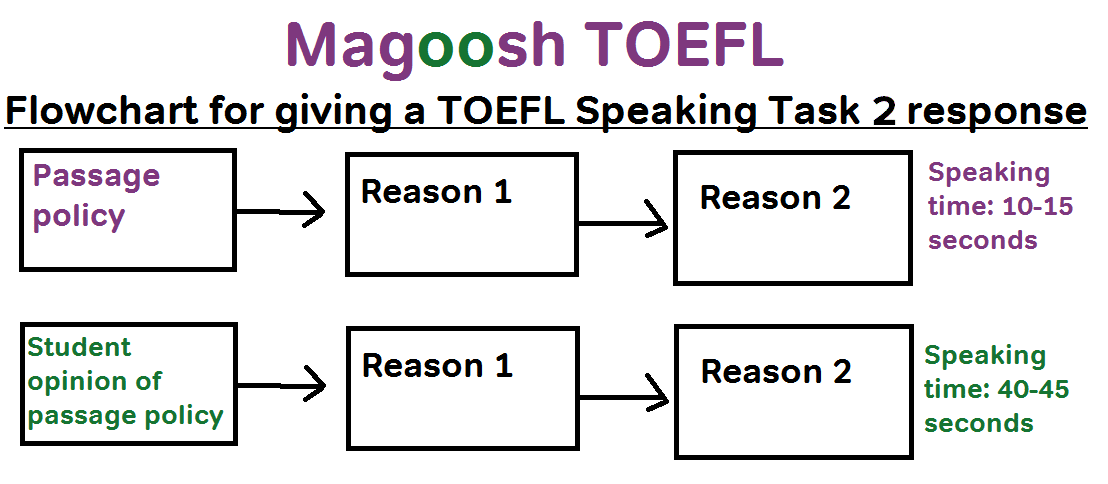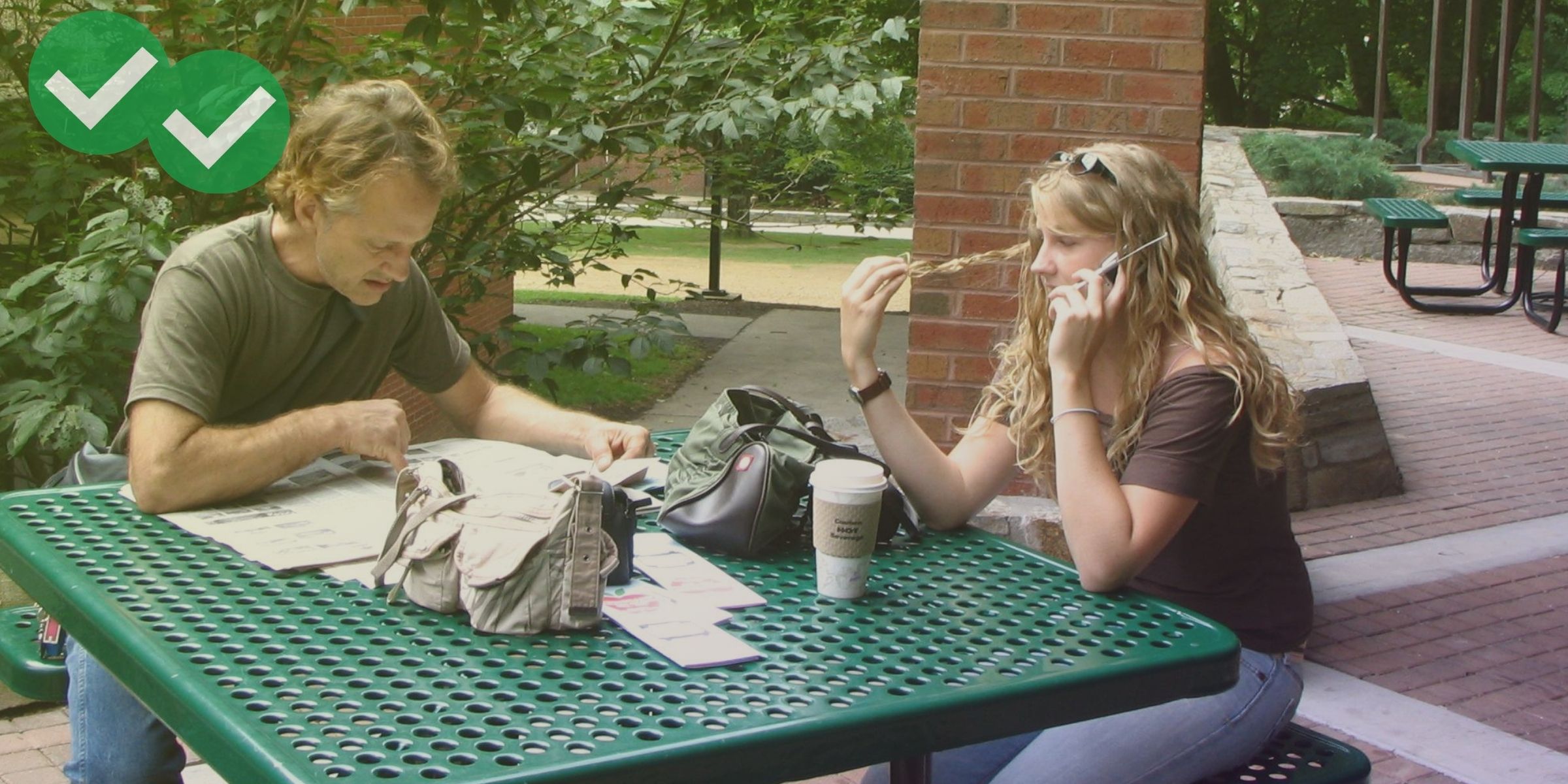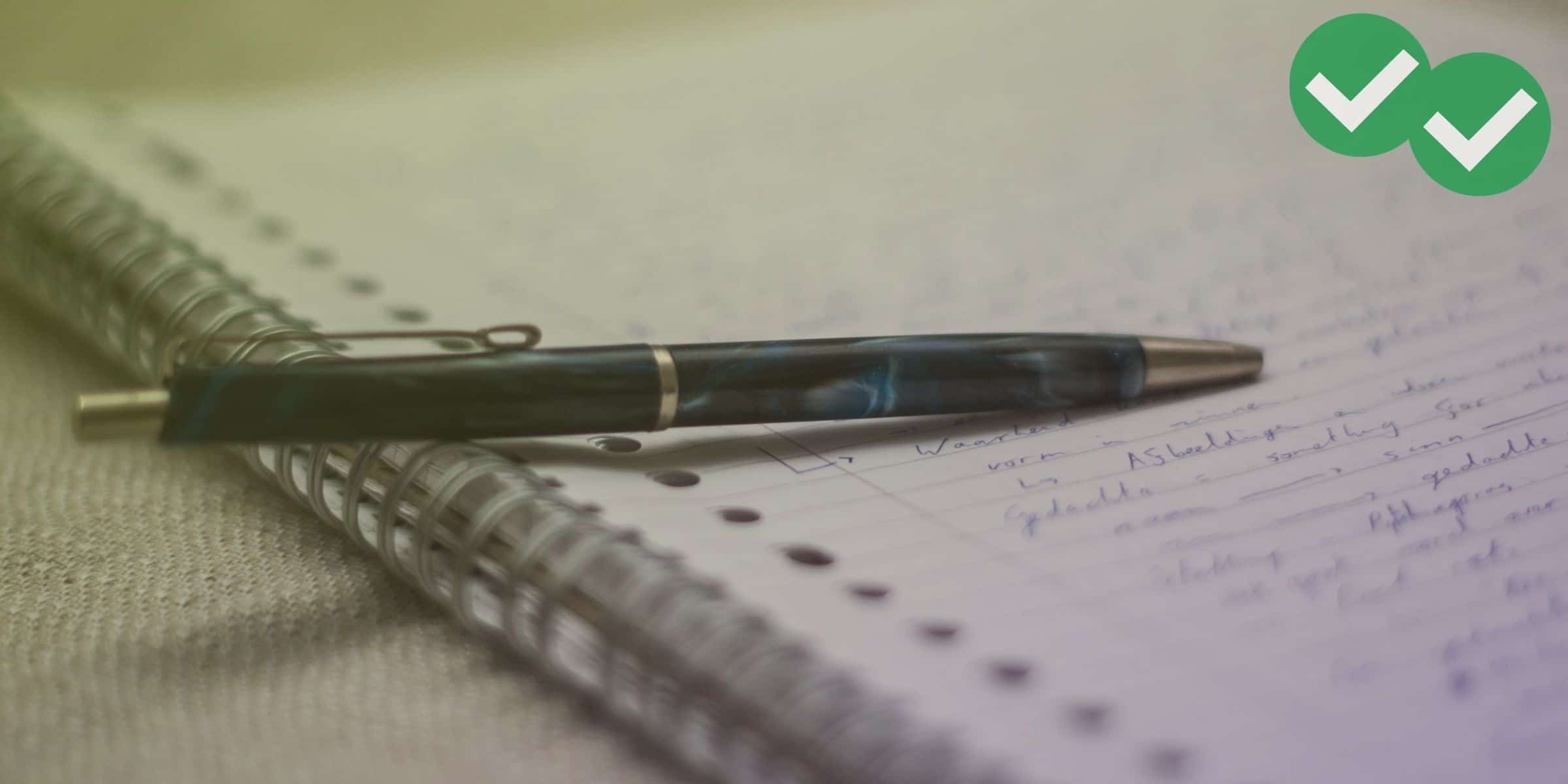
As I’ve mentioned, many TOEFL test-takers find TOEFL Speaking Task 2 to be especially hard. Today, we’ll look at a TOEFL Speaking Task 2 example answer. This model answer follows a TOEFL Speaking Task 2 template I recently gave you: the flowchart-based TOEFL Speaking Task 2 template.
Reviewing TOEFL Speaking Task 2: Prompt and Flowchart Template
Before we get to the answer, let’s once again visually review the structure of the TOEFL Speaking Task 2 prompt:

Now, let’s look again at the flowchart template:

And now for the answer. We’ll base this answer on an official TOEFL Speaking Task 2 prompt from ETS. The reading passage for this prompt is found on page 18 of TOEFL Quick Prep Volume 3. The transcript for the audio conversation can be seen on page 3 of this same Quick Prep PDF. And the actual audio for the task can be listened to on track 9 of TOEFL Quick Prep Volume 3.
I will show you the notes, audio and transcript for my sample response.
TOEFL Speaking Task 2: Sample Response (notes)
Notice that the notes themselves are in flowchart form. I’ve made the two parts of the flowchart move downward, placed side by side vertically. You can take similar TOEFL Speaking Task 2 similar notes by folding or marking a piece of scratch paper so that it has two columns.

TOEFL Speaking Task 2: Sample Response (audio)
TOEFL Speaking Task 2: Sample Response (transcript)
The university has announced a new policy that they will be playing classical music in the school cafeteria. So students can relax on their lunch break, maybe unplug their personal music and talk more to each other, also.
Now, the student in the conversation thinks this is a pretty bad idea. One thing he says is that during lunch, a lot of students are actually really busy. They’re doing homework, they’re studying. So they’re not just going to want to relax and listen to classical music at lunch. And the student also points out that classical music isn’t even all that popular with college kids.
So if classical music is playing, nobody’s going to like the music, and they’re actually more likely to bring their own headsets and listen to their own music. And that means they’re not going to unplug and really talk to each other. So for those two reasons, the student feels this is not such a good idea.






Leave a Reply